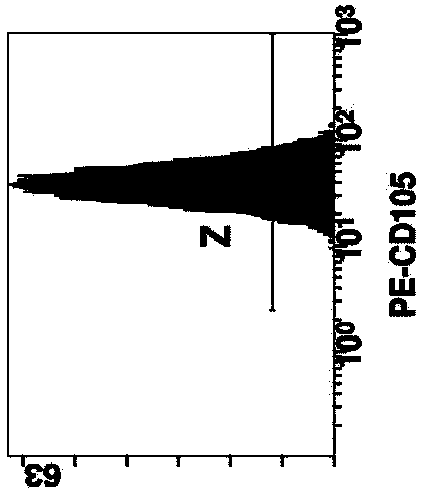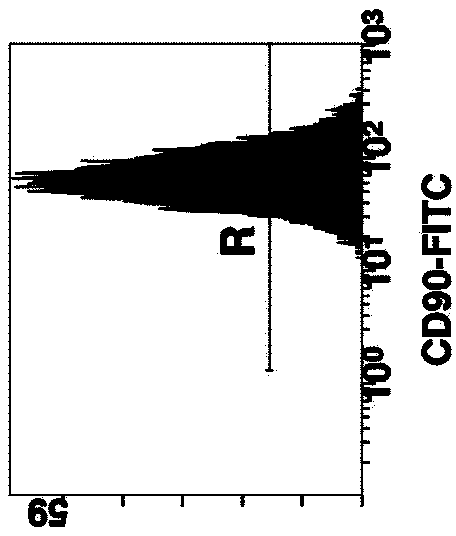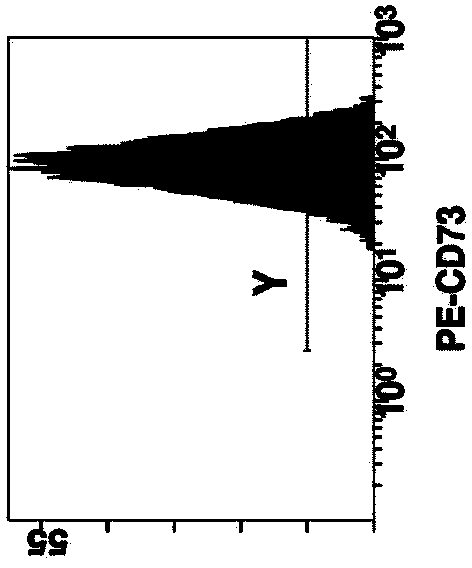Method for cultivating autologous umbilical cord mesenchymal stem cells by adopting human umbilical cord blood rich platelet lysate
A platelet lysate, umbilical cord stem cell technology, applied in the field of regenerative medicine and biology, can solve pollution, allergic pollution and other problems
- Summary
- Abstract
- Description
- Claims
- Application Information
AI Technical Summary
Problems solved by technology
Method used
Image
Examples
Embodiment 1
[0038] A method for culturing autologous umbilical cord mesenchymal stem cells with human umbilical cord blood platelet rich lysate. The steps are: preparation of umbilical cord blood platelet rich serum, preparation of platelet lysis solution, preparation of platelet-free serum, and cytokine PDGF in platelet lysis solution -Determination of AB, FGF2, TGF-β, VEGF content, isolation and primary culture of umbilical cord stem cells, culture and passage of umbilical cord stem cells, cryopreservation of umbilical cord stem cells, karyotype analysis, surface antigen of umbilical cord mesenchymal stem cells after culture analysis.
Embodiment 2
[0040] According to the method for culturing autologous umbilical cord mesenchymal stem cells with human cord blood platelet-rich lysate described in Example 1, the preparation of cord blood platelet-rich serum: 50-120 ml of collected cord blood is aliquoted into 50 ml sterile centrifuge tubes Centrifuge at 150-220g for 5-25 minutes at a temperature of 4-30 degrees. The upper layer is platelet-rich serum. The blood collection bag or blood collection tube uses 2000-5000UI heparin as the anticoagulant. The upper serum accounts for 40% of the total volume. %.
Embodiment 3
[0042] According to the method for culturing autologous umbilical cord mesenchymal stem cells with the human umbilical cord blood platelet-rich lysate described in embodiment 1 or 2, the preparation of the platelet lysate: transfer the platelet-rich serum to a new sterile centrifuge tube, using Sysmex The hematology analyzer (KX-21) counts the number of red blood cells, white blood cells, and platelets contained in whole blood and serum. The ideal number of platelets in the serum for umbilical cord mesenchymal stem cell culture is 0.5~1×10 9 / ml; put the serum in the refrigerator at -80 degrees for 2-24 hours; after the frozen platelet-containing serum is rapidly recovered at 37 degrees, centrifuge at 800-1200g for 5-30 minutes to remove cell debris and supernatant The solution is the platelet lysate, which is proportioned at a certain concentration and used for the cultivation of autologous umbilical cord stem cells.
PUM
 Login to View More
Login to View More Abstract
Description
Claims
Application Information
 Login to View More
Login to View More - R&D
- Intellectual Property
- Life Sciences
- Materials
- Tech Scout
- Unparalleled Data Quality
- Higher Quality Content
- 60% Fewer Hallucinations
Browse by: Latest US Patents, China's latest patents, Technical Efficacy Thesaurus, Application Domain, Technology Topic, Popular Technical Reports.
© 2025 PatSnap. All rights reserved.Legal|Privacy policy|Modern Slavery Act Transparency Statement|Sitemap|About US| Contact US: help@patsnap.com



